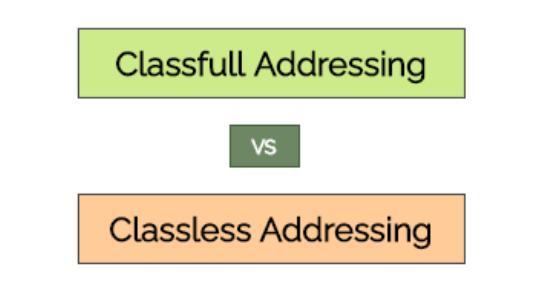Differentiating classful and classless addressing is crucial for understanding the evolution of IP address allocation and routing. The transition from classful to classless systems significantly impacts network efficiency and management. Before diving into the distinctions, grasping the historical context and operational mechanisms of each method provides a solid foundation for comprehending their respective advantages and limitations.
Differences Between Classful and Classless Addressing
Overview of Classful Addressing
Classful addressing emerged as the initial IP addressing method, organizing IP addresses into fixed classes: A, B, C, D, and E. Each class designated a specific range and structure, simplifying address allocation. For instance, Class A addresses catered to large networks with millions of hosts, Class B to medium-sized networks, and Class C to smaller networks. Classes D and E were reserved for multicast and experimental use, respectively. The primary advantage of classful addressing lies in its simplicity. Administrators could easily identify an address’s class based on its initial bits, streamlining network design and implementation. However, this rigidity also posed significant challenges.
Transition to Classless Addressing
Classless Inter-Domain Routing (CIDR) was introduced to overcome the shortcomings of classful addressing. CIDR abandoned the fixed class structure, allowing variable-length subnet masking (VLSM) to enable more precise IP address allocation. This flexibility significantly improved address utilization and scalability. In CIDR, an IP address is accompanied by a prefix indicating the number of significant bits in the network portion. For example, 192.168.1.0/24 denotes a network with 24 bits dedicated to the network portion, leaving 8 bits for host addresses. This flexibility allows network administrators to allocate IP addresses more efficiently, minimizing wastage. CIDR’s benefits extend beyond address conservation. It enhances routing efficiency by reducing the size of routing tables, which mitigates the strain on routers and optimizes overall network performance.
Features of Classful Addressing
Classful addressing employs a fixed structure for IP allocation:
Class A: Ranges from 0.0.0.0 to 127.255.255.255, with a default subnet mask of 255.0.0.0. It supports up to 16 million hosts per network but only accommodates 128 networks.
Class B: Spans from 128.0.0.0 to 191.255.255.255, using a default subnet mask of 255.255.0.0. This class supports up to 65,000 hosts per network and 16,000 networks.
Class C: Covers 192.0.0.0 to 223.255.255.255, with a default subnet mask of 255.255.255.0. It supports 254 hosts per network and over 2 million networks.
Class D: Reserved for multicast applications.
Class E: Reserved for experimental use.
Features of Classless Addressing
Variable-Length Subnet Masking (VLSM): Allows subdivisions within networks, providing the flexibility to allocate addresses based on current needs. This mechanism prevents wastage and maximizes address utilization.
CIDR Notation: Represents IP addresses with a suffix indicating the number of bits used for the network portion. For instance, 203.0.113.0/25 specifies a network with 25 bits for the network and the remaining 7 for hosts.
Aggregated Routes: Simplifies routing by combining multiple subnets into a single routing entry. This aggregation reduces routing table size, enhancing router performance and easing network management.
Scalability: Efficiently supports the growth of networks by allowing seamless integration of new addresses without reconfiguring existing infrastructure.
Routing Efficiency: Reduces the complexity of routing decisions and improves overall network throughput.
Key Differences
Classful addressing is characterized by its fixed class structure and predefined subnet masks, whereas classless addressing utilizes VLSM and CIDR notation for flexible and efficient IP allocation. Classful networks face address wastage and limited scalability, while classless networks offer enhanced utilization, scalability, and routing efficiency. The transition to classless addressing represents a response to the growing demands of the internet, providing a more adaptable and resource-efficient approach to IP address management.
FOR MORE INFORMATION CLICK HERE : experiences for gift ideas
Conclusion
Understanding the distinctions between classful and classless addressing is fundamental for effective network design and management. While classful addressing offers simplicity, it suffers from inefficiency and scalability issues. In contrast, classless addressing, through CIDR and VLSM, provides the flexibility required for optimal IP address utilization and streamlined routing. Adopting classless addressing is essential for modern networks to handle the increasing complexity and demands of today’s interconnected world.
